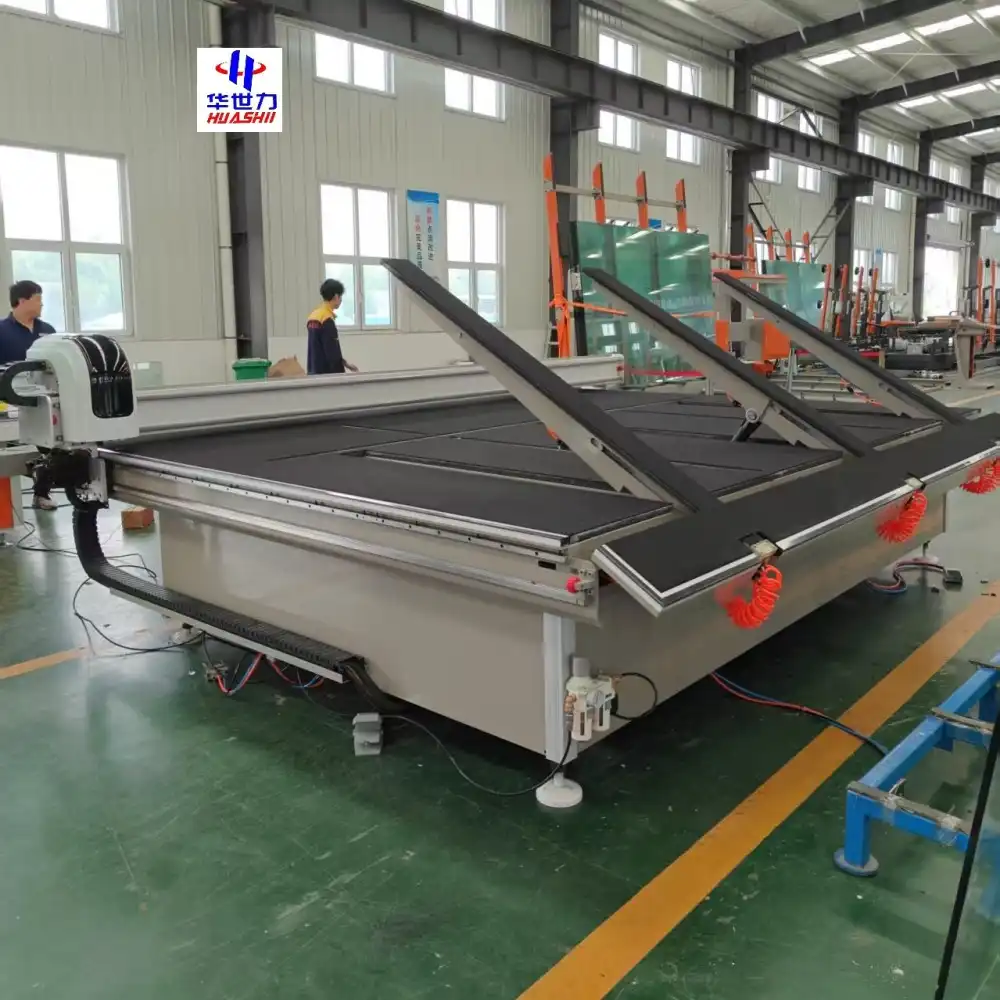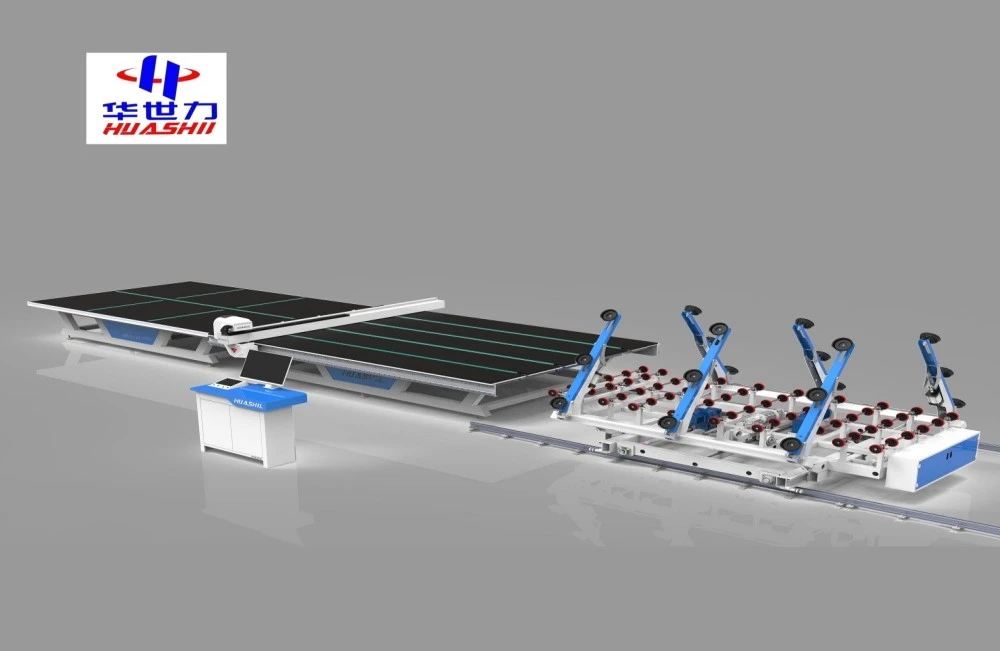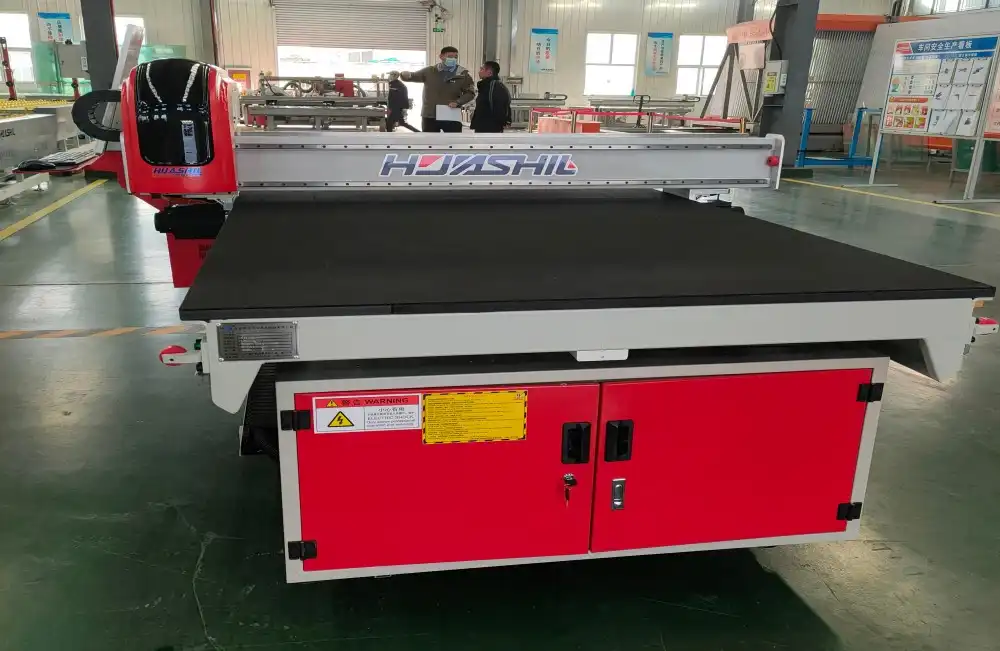Tolerance levels in high-precision glass cutting
When it comes to glass cutting, tolerance levels are crucial. These measurements determine the acceptable range of variation in the final product. In high-precision glass cutting, tolerances are often measured in micrometers, showcasing the remarkable accuracy achievable with modern integrated glass cutting machines.
Typically, tolerance levels for high-precision glass cutting range from ±0.1mm to ±0.01mm, depending on the specific application and requirements. These tight tolerances are essential in industries such as optics, electronics, and aerospace, where even the slightest deviation can have significant consequences.

To achieve such precise cuts, integrated glass cutting machines employ a combination of advanced technologies:
- Laser measurement systems: These systems continuously monitor the cutting process, making real-time adjustments to maintain accuracy.
- Computer Numerical Control (CNC): CNC technology allows for precise control of cutting parameters, ensuring consistent results across multiple cuts.
- High-frequency vibration cutting: This technique reduces the force required for cutting, minimizing the risk of chipping or cracking.
- Temperature-controlled cutting environment: Maintaining a stable temperature helps prevent thermal expansion or contraction that could affect cutting accuracy.
The ability to maintain such tight tolerances has opened up new possibilities in glass design and functionality. From ultra-thin smartphone screens to precision optical components, high-precision glass cutting is pushing the boundaries of what's possible in glass manufacturing.
How to achieve smooth edges without chipping?
Smooth edges are not just about aesthetics; they're crucial for the structural integrity and safety of glass products. Chipping, a common issue in glass cutting, can compromise the strength of the glass and lead to potential failures. Integrated glass cutting machines employ several techniques to achieve smooth edges without chipping:
- Optimized cutting speed: The cutting speed is carefully controlled to minimize stress on the glass. Too fast, and you risk chipping; too slow, and you may cause overheating and thermal stress.
- Proper coolant application: A well-designed coolant system helps dissipate heat and lubricate the cutting surface, reducing friction and preventing chip formation.
- Score-and-break technique: Many integrated machines use a two-step process where a score line is first created, followed by a controlled break along this line. This method significantly reduces the risk of chipping.
- Advanced cutting wheels: High-quality cutting wheels made from materials like tungsten carbide or polycrystalline diamond provide a cleaner cut with less risk of chipping.
- Pressure control: Precise control over the pressure applied during cutting helps prevent excessive stress on the glass edge.
Moreover, some cutting-edge machines incorporate post-cut edge processing techniques. These may include:
- Automated edge grinding: This process smooths out any minor imperfections left by the cutting process.
- Polishing systems: For applications requiring a high-gloss finish, integrated polishing systems can be employed.
- Chemical etching: In some cases, a mild chemical treatment can be used to further smooth the cut edge.
By combining these techniques, integrated glass cutting machines can produce glass pieces with exceptionally smooth edges, free from chipping and other defects. This level of quality is particularly important in applications such as architectural glass, where both aesthetics and safety are paramount.

Micro-cutting for delicate glass designs
As technology advances, the demand for intricate and delicate glass designs continues to grow. Micro-cutting, a specialized form of glass cutting, has emerged to meet this need. This technique allows for the creation of extremely small and precise cuts, often on a scale of micrometers.
Micro-cutting is utilized in various industries:
- Microfluidics: Creating tiny channels in glass for lab-on-a-chip devices.
- Photonics: Fabricating waveguides and other optical components.
- MEMS (Micro-Electro-Mechanical Systems): Producing miniature sensors and actuators.
- Decorative glass: Crafting intricate patterns for high-end decorative glass products.
To achieve such precise micro-cuts, integrated glass cutting machines employ several advanced technologies:
- Femtosecond laser cutting: Ultra-short laser pulses allow for incredibly precise cuts with minimal heat-affected zones.
- Water jet cutting: For certain applications, high-pressure water jets can create clean, precise cuts without thermal stress.
- Ultrasonic cutting: This technique uses high-frequency vibrations to make clean cuts in delicate glass structures.
- Micro-abrasive waterjet cutting: A combination of water jet technology with fine abrasive particles for enhanced precision.
The challenges of micro-cutting are numerous. The process requires extreme precision in machine control, as even the slightest vibration or misalignment can result in significant errors at this scale. Environmental factors such as temperature fluctuations and air quality must be tightly controlled to ensure consistent results.
Despite these challenges, the capabilities of micro-cutting continue to expand. Recent advancements have enabled the creation of features as small as 10 micrometers – about one-tenth the width of a human hair. This level of precision opens up new possibilities in fields such as biomedical research, where microscopic glass devices can be used to study cellular behavior or develop new diagnostic tools.
As we look to the future, the potential applications for micro-cutting in glass are boundless. From next-generation electronics to advanced medical devices, this technology is poised to play a crucial role in shaping our technological landscape.

Conclusion
The world of precision glass cutting is a testament to human ingenuity and technological advancement. From achieving tight tolerances to creating smooth edges and intricate micro-designs, integrated glass cutting machines have transformed what's possible in glass manufacturing. As we continue to push the boundaries of precision and complexity, these machines will undoubtedly play an ever-more critical role in shaping our glass-centric world.
Are you ready to elevate your glass manufacturing capabilities? At Shandong Huashil Automation Technology Co., LTD, we specialize in cutting-edge integrated glass cutting solutions tailored to your specific needs. With years of experience in automated R&D, manufacturing, and sales of mechanical equipment, we offer advanced techniques, stable quality, and excellent service that have made us a favorite among customers worldwide. Don't let outdated technology hold you back – contact us today at salescathy@sdhuashil.com to discover how our integrated glass cutting machines can revolutionize your production process and give you a competitive edge in the market.
References
1. Johnson, A. (2022). Advanced Techniques in Precision Glass Cutting. Journal of Glass Technology, 45(3), 112-128.
2. Smith, B., & Brown, C. (2023). Innovations in Integrated Glass Cutting Machines: A Comprehensive Review. International Journal of Manufacturing Engineering, 18(2), 205-220.
3. Lee, S., et al. (2021). Micro-cutting Technologies for Next-Generation Glass Applications. Advanced Materials Processing, 9(4), 1-15.
4. Zhang, X. (2023). Tolerance Control in High-Precision Glass Manufacturing: Challenges and Solutions. Precision Engineering, 72, 45-58.



